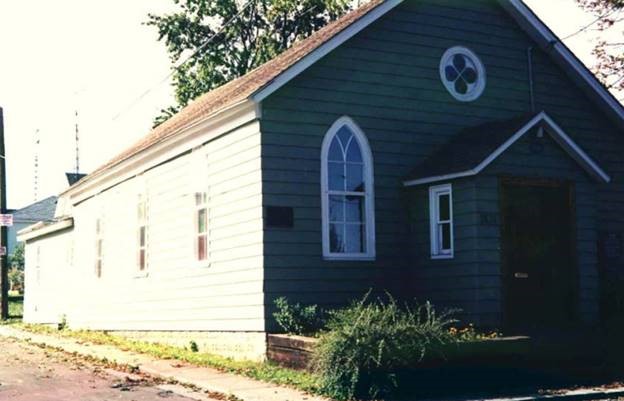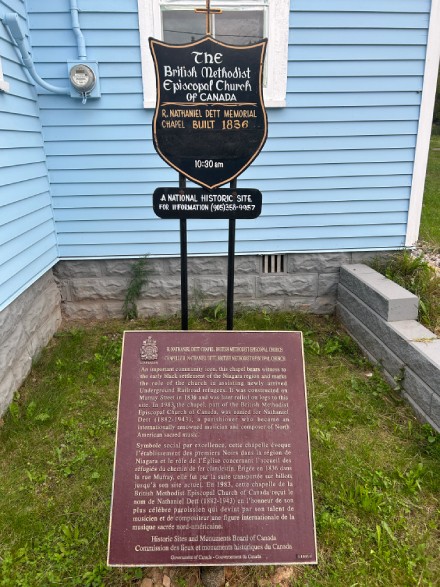R. Nathaniel Dett British Methodist Episcopal Church National Historic Site

© Parks Canada / S. Ricketts
The R. Nathaniel Dett British Methodist Episcopal Church was designated as a national historic site in 2000.
Commemorative plaque: 5674, rue Peer, Niagara Falls, OntarioFootnote 1
R. Nathaniel Dett Chapel, British Methodist Episcopal Church
An important community icon, this chapel bears witness to the early black settlement of the Niagara region and marks the role of the church in assisting newly arrived Underground Railroad refugees. It was constructed on Murray Street in 1836 and was later rolled on logs to this site. In 1983 the chapel, part of the British Methodist Episcopal Church of Canada, was named for Nathaniel Dett (1882-1943), a parishioner who became an internationally renowned musician and composer of North American sacred music.
Description of historic place
R. Nathaniel Dett British Methodist Episcopal Church National Historic Site of Canada is a small wood-frame church located in a residential community close to the business district in the city of Niagara Falls, Ontario. This gable-roofed, three-bay, single-storey building features regularly placed openings. Its gable end features a quatrefoil window set above a modest entry porch flanked by lancet windows. Its open speaking box design and intimate interior speak to the close involvement of its African-Canadian congregation. Official recognition refers to the exterior and interior of the building at the time of designation in 2000.
Heritage value

© Parks Canada / Hayley Lashmar
R. Nathaniel Dett British Methodist Episcopal Church was designated a national historic site of Canada because:
- it illustrates the early black settlement of the Niagara area and the role of the church in the reception, shelter and assistance of newly arrived Underground Railroad refugees;
- it is importantly associated with the formative years of R. Nathaniel Dett, a leading figure 20th-century North American sacred music.
The heritage value of this site resides in the location, form and materials of the building and in its continued use by the African-Canadian community. An important symbol within the community, this chapel was constructed in 1836 on Murray Street in the Fallsview area and later rolled on logs, down the hill, to a less damp and windy site in the present Drummondville area, and set up on a lot donated by Oliver Parnall, a successful refugee from slavery. The congregation had existed since the arrival of the Loyalists after the American Revolution and continued to grow with the arrival of Black refugees fleeing American slavery. In 1983, the church was renamed to commemorate Nathaniel Dett (1882-1943), a parishioner who became an internationally renowned musician and composer of North American sacred music. The importance of music to the black community went far beyond that community’s boundaries because music was often one of the only ways in which the black and white communities interacted. Music had a special appeal that could temporarily break down racial divides, as is illustrated by the careers of both R. Nathaniel Dett and Portia White. The church currently houses the Norval Johnson Heritage Library, a collection of material on the history of the local community.
Source: Historic Sites and Monuments Board of Canada, Minutes, November 1999.
The National Program of Historical Commemoration relies on the participation of Canadians in the identification of places, events and persons of national historic significance. Any member of the public can nominate a topic for consideration by the Historic Sites and Monuments Board of Canada.
- Date modified :